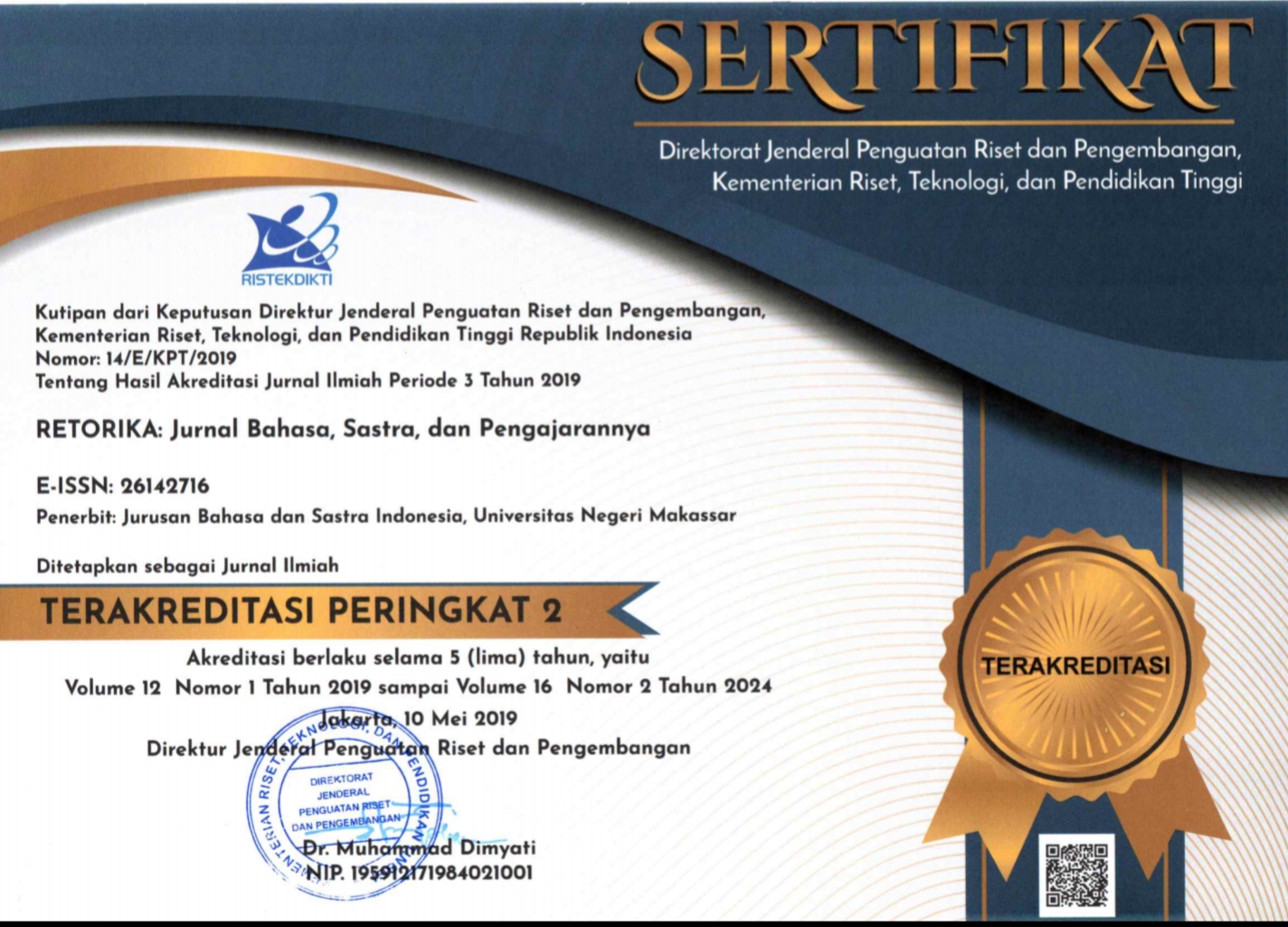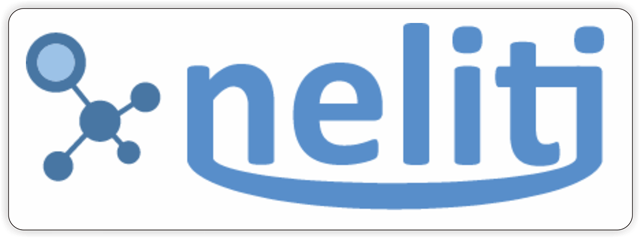STUDENTS’ READINESS ON THE USE OF MEDIA IN LEARNING PROCESS
(1) Universitas Atma Jaya Yogyakarta
(2) Universitas Atma Jaya Yogyakarta
(*) Corresponding Author
DOI: https://doi.org/10.26858/retorika.v14i2.20160
Abstract
In this era, English plays an important role in opening access to education and career. Regarding the significance, universities in Indonesia not only include English subjects in the curriculum, but they also use the English media for other subjects such as books, presentation slides, and video. This application has been a complaint from students, especially the first-year students who are used to using Indonesian media. Therefore, this study aims to see first-year students’ readiness in using English media for the learning process. This study adopts a mixed-method approach using questionnaires and interviews. The result shows the students feel that they have good English skills, but the learning process using English media has not been optimized. Furthermore, this condition has affected the learning process.
Keywords
Full Text:
PDFReferences
Akbari, Z. (2016). The Study of EFL Students⿿ Perceptions of their Problems, Needs and Concerns over Learning English: The Case of MA Paramedical Students. Procedia - Social and Behavioral Sciences, 232(April), 24–34. https://doi.org/10.1016/j.sbspro.2016.10.006
Cain, K., & Oakhill, J. (2014). Reading comprehension and vocabulary: Is vocabulary more important for some aspects of comprehension? Annee Psychologique, 114(4), 647–662. https://doi.org/10.4074/S0003503314004035
Cao, N. T. (2011). Challenges of Learning English in Australia towards students coming from selected Southeast Asian countries: Vietnam , Thailand and Indonesia. International Education Studies, 4(1), 13–20.
Chowdhury, R., & Kabir, A. H. (2014). Language wars: English education policy and practice in Bangladesh. Multilingual Education, 4(1), 1–16. https://doi.org/10.1186/s13616-014-0021-2
Cirocki, A., & Farrell, T. S. C. (2019). Professional development of secondary school EFL teachers: Voices from Indonesia. System, 85, 102111. https://doi.org/10.1016/j.system.2019.102111
Demirel, E. T., & Kazazoğlu, S. (2015). The Comparison of Collocation Use by Turkish and Asian Learners of English: The Case of TCSE Corpus and Icnale Corpus. Procedia - Social and Behavioral Sciences, 174, 2278–2284. https://doi.org/10.1016/j.sbspro.2015.01.887
Earls, C. W. (2016). When English just is not enough: ‘Multilingualism with English’ in contemporary European higher education. International Journal of Applied Linguistics (United Kingdom), 26(3), 329–347. https://doi.org/10.1111/ijal.12114
Evans, S., & Morrison, B. (2011). Meeting the challenges of English-medium higher education: The first-year experience in Hong Kong. English for Specific Purposes, 30(3), 198–208. https://doi.org/10.1016/j.esp.2011.01.001
Gardner, R. C. (2010). Motivation and Second Language Acquisition. Peter Lang Publishing, Inc.
Gilquin, G. (2015). From design to collection of learner corpora. The Cambridge Handbook of Learner Corpus Research, 9–34. https://doi.org/10.1017/CBO9781139649414.002
Huang, S. H., Capps, M., Blacklock, J., & Garza, M. (2014). Reading Habits of College Students in the United States. Reading Psychology, 35(5), 437–467. https://doi.org/10.1080/02702711.2012.739593
Kartika, L., & Mastuti, E. (2011). Motivasi Membaca Literatur Berbahasa Inggris pada Mahasiswa Psikologi Universitas Airlangga Surabaya. Insan, 13(3), 185–192.
Kunasaraphan, K. (2015). English Learning Strategy and Proficiency Level of the First Year Students. Procedia - Social and Behavioral Sciences, 197(February), 1853–1858. https://doi.org/10.1016/j.sbspro.2015.07.246
Lightbown, P. M., & Spada, N. (2009). How Languages are Learned. . Oxford University Press.
Mahsun. (2012). Metode Penelitian Bahasa: Tahapan Srategi, Metode, dan Tekniknya. Rajawali Press.
Marsella, E. (2020). Exploring Teachers’ Use of First Language (L1) in EFL Classroom. Teknosastik, 18(1), 15. https://doi.org/10.33365/ts.v18i1.483
McKay, S. L. (2006). Researching Second Language Classrooms. Lawrence Erlbaum Associates.
Mokhtari, K., Reichard, C. A., & GArdner, A. (2009). The Impact of Internet and Televison Use on the Reading Habits and Practices of College Students. Journal of Adolescent & Adult Literacy, 52(7), 609–619. https://doi.org/10.1598/JA
Nation, I. S. P. (2006). How large a vocabulary is needed for reading and listening? Canadian Modern Language Review, 63(1), 59–82. https://doi.org/10.3138/cmlr.63.1.59
OECD. (2016). PISA 2015 Results: Excellence and Equity in Education: Vol. I. https://doi.org/10.1787/9789264266490-5-en
Perfetti, C., & Stafura, J. (2014). Word Knowledge in a Theory of Reading Comprehension. Scientific Studies of Reading, 18(1), 22–37. https://doi.org/10.1080/10888438.2013.827687
Poedjiastutie, D., & Oliver, R. (2017). English Learning Needs of Esp Learners: Exploring Stakeholder Perceptions At an Indonesian University. TEFLIN Journal - A Publication on the Teaching and Learning of English, 28(1), 1. https://doi.org/10.15639/teflinjournal.v28i1/1-21
Richards, J. C., & Rodgers, T. S. (2014). Approaches and Methods in Language Teaching (3rd ed.). Cambridge University Press.
Rose-Wiles, L. M., Shea, G., & Kehnemuyi, K. (2020). Read in or check out: A four-year analysis of circulation and in-house use of print books. Journal of Academic Librarianship, 46(4), 102157. https://doi.org/10.1016/j.acalib.2020.102157
Rose, H., & McKinley, J. (2018). Japan’s English-medium instruction initiatives and the globalization of higher education. Higher Education, 75(1), 111–129. https://doi.org/10.1007/s10734-017-0125-1
Setiadi, R., & Piyakun, A. (2019). Foreign literacy practices and learning skills among Indonesian and Thai students of graduate education studies. Kasetsart Journal of Social Sciences, 40(2), 333–340. https://doi.org/10.1016/j.kjss.2017.12.006
Sundoro, B. T. (2020). Penggunaan Alih Kode Pada Pembelajaran Bahasa Indonesia Berperspektif Gender. Indonesian Language Education and Literature, 6(1), 1. https://doi.org/10.24235/ileal.v6i1.6108
Tulung, G. (2020). English language mastery as an ease factor to access health information in industrial revolution 4.0: A local challenge for global opportunities. Enfermería Clínica, 30, 218–221.
Wang, D., & Kirkpatrick, A. (2012). Code choice in the Chinese as a foreign language classroom. Multilingual Education, 2(1), 1–18. https://doi.org/10.1186/2191-5059-2-3
Webb, S., & Macalister, J. (2013). Is text written for children useful for L2 extensive reading? TESOL Quarterly, 47(2), 300–322. https://doi.org/10.1002/tesq.70
Yamagami, M., & Tollefson, J. W. (2011). Elite Discourses of globalization in Japan: The role of english. English in Japan in the Era of Globalization, 15–37. https://doi.org/10.1057/9780230306196_2
Article Metrics
Abstract view : 248 times | PDF view : 60 timesRefbacks
- There are currently no refbacks.
Copyright (c) 2022 Elisabeth Marsella

This work is licensed under a Creative Commons Attribution-NonCommercial 4.0 International License.
Published by:
Department of Indonesian Language, Faculty of Languages and Literature, Universitas Negeri Makassar in cooperate with Asosiasi Dosen Bahasa dan Sastra Indonesia (ADOBSI) and Ikatan Program Studi Pendidikan Bahasa dan Sastra Indonesia (IKAPROBSI).
Address: Department of Indonesian Language Office, DG Building Second Floor, UNM Parangtambung, Daeng Tata Raya Street, Makassar, South Sulawesi, Indonesia
 Email: [email protected]
Email: [email protected]

RETORIKA: Jurnal Bahasa, Sastra,dan Pengajarannya is licensed under a Creative Commons Attribution-NonCommercial 4.0 International License.
















